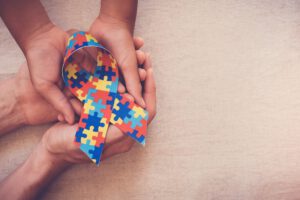Ruth Shidlo, PhD.
IT HAS BEEN suggested that one of the so-called structures of our personality can be envisioned as a narcissistic envelope—like our skin, this narcissistic envelope differentiates between us and the outside world, protecting us from foreign influences (Solan, 2015) .
Through-out development, we are attracted to that which is similar to us and resist that which is different (the non-self). We do so in an effort to protect the integrity and cohesiveness of our self-familiarity, that is, the familiar self that we know as our self, which encompasses our sensations, feelings, thoughts and memories of personal experiences.
Under certain conditions, we learn to befriend “the other,” to identify the similarities we share, not only attend to the differences. In this way, we adapt to our environment and reach out to others, allowing them to reach out to us. A mental representation of our self and others is in essence an adaptation mechanism that allows us to cope with our environment. We recognize experiences and objects as familiar or alien via their narcissistic resonance within us, with our body sensations, associations and memories (Solan, 2015)(1).
Parallel to our body’s inticate biological immune system at the cellular level, there exists an innate emotional immune system that allows us to safeguard self-familiarity and resist foreign incursions (Solan, 2015).
The mechanism behind our experience
Each experience, image, thought, feeling or sensation triggers numerous nerve cells that together, form a neural network. As Hebb (1949)(2) pointed out, “neurons that fire together, wire together.” These neural networks are thought to be the neural substrate of our inner representations or schemas of the world. These schemas are gradually developed and refined on the basis of our cumulative interpersonal experiences with others. For the most part, these interactional patterns involve a self representation or image of self, an object representation and an affect or feeling tone. We use our schemas as filters through which we experience the world.
Solan (2015) differentiates among beneficial, harming and destructive schemas.
Narcissistic beneficial schemas contain clusters of positively-toned memories relating to “experiences of true self, of separateness, and of coping with non-self otherness in terms of jointness-separateness relationships.” (p. 282). In her book, The Enigma of Childhood, Solan explains how these various constructs are part and parcel of who we are. In essence, they pertain to experiences of wholeness.
According to Solan, there exist two additional types of narcissistic schemas, which she refers to as harming and destroying, respectively (see her book for more information). They have an insidious effect on our self-esteem and on our ability to love ourselves, and detract from our experience of ourselves as whole and as true to our core or true self.
In order to resist and counterbalance the recurring incursions and invasions of harming and destroying schemas into our sense of a coherent self-familiarity, we rely on our inner resources to immunize us. These resources may include our positive memories, as well as representations of nurturing, protective, inner wisdom and spiritual figures. They may be based on people we encountered at some period of our life, animals, or imaginary figures, elaborated upon from those first encountered in books, films and mythology. They may also be based on our adult self, for example, our protective adult self and its various aspects, such as the ability to be protective, strong, courageous, grounded, confident, and so forth. It is important to access a bodily sense of the resource i.e., what you sense in your body when you recall or imagine the resource.
***
Sometimes, for example, when depressed, we are cut off from some of our inner resources. These resources include memories and other inner representations of positive experiences or successes we have had, personal traits, such as creativity and a sense of humor, and skills. Such memories and experiences may become buried, as it were, under a mountain of less positive experiences, and it may be difficult to extricate them, as they are stored in different memory networks (e.g., beneficial schemas, harmful schemas and destructive schemas).
Imagine a house with many rooms. Only some are used on a regular basis. Some are completely forgotten and others are rarely used.
This metaphor, taken from Rumi, can be applied to how we use our resources.
When we focus on a resource we wish to access and strengthen, the doors to the forgotten rooms seem to open and these hitherto forgotten rooms become an integral part of the house, in a way they weren’t before.
Before targeting and embarking on the processing of traumatic or painful memories, it is critical the therapist help the patient connect to his or her resources, thus ensuring his or her safety and stabilization. This can be done via an EMDR-related procedure known as “resource tapping” (Parnell, 2013)(3) .
Resource tapping combines the power of imagination with that of alternate bilateral stimulation. When used skillfully and judiciously, the power of imagination allows the patient to summon his resources and embark in self-healing. This process is strengthened via tapping, that is, providing brief alternate bilateral stimulation by having the therapist either gently tapping the patient’s hands or administering tactile stimulation via a special device with vibrating pulsers the patient can hold. The patient may also be taught to administer self-tapping, for example via the “butterfly hug.” If overdone, tapping can elicit traumatic experiences. Should this occur, it is important to stop the tapping in.
How does this work?
Early in our work together, I have patients summon a safe or peaceful place via their imagination. When the image comes alive for them, and is vividly anchored in body sensations subjectively experienced as calming, relaxing or pleasant, I utilize brief bilateral stimulation to “tap in” the resource. This alternating bilateral stimulation is thought to facilitate the brain’s ability to effectively process information, strengthening the neural pathways involved or building new ones alongside the old.
Once a peaceful place is easily accessible, we may add nurturing, protective, and/or inner wisdom figures. These figures are elicited from the patient himself, rather than introduced by the therapist, and reflect the patient’s resilience, meanwhile providing important information regarding existing strengths and what other resources need to be cultivated or strengthened. Like with the safe or peaceful place, once they come alive for the patient, they can be tapped in as long as they retain their positive nature.
See also:
- Solan, R. (2015). The Enigma of Childhood. London: Karnac.
- Hebb, D.O. (1949). The Organization of Behavior. New York: Wiley & Sons.
- Parnell, L. (2013). Attachment-focused EMDR. Healing Relational Trauma.
New York: Norton - The exact procedure is beyond the scope of this article.











